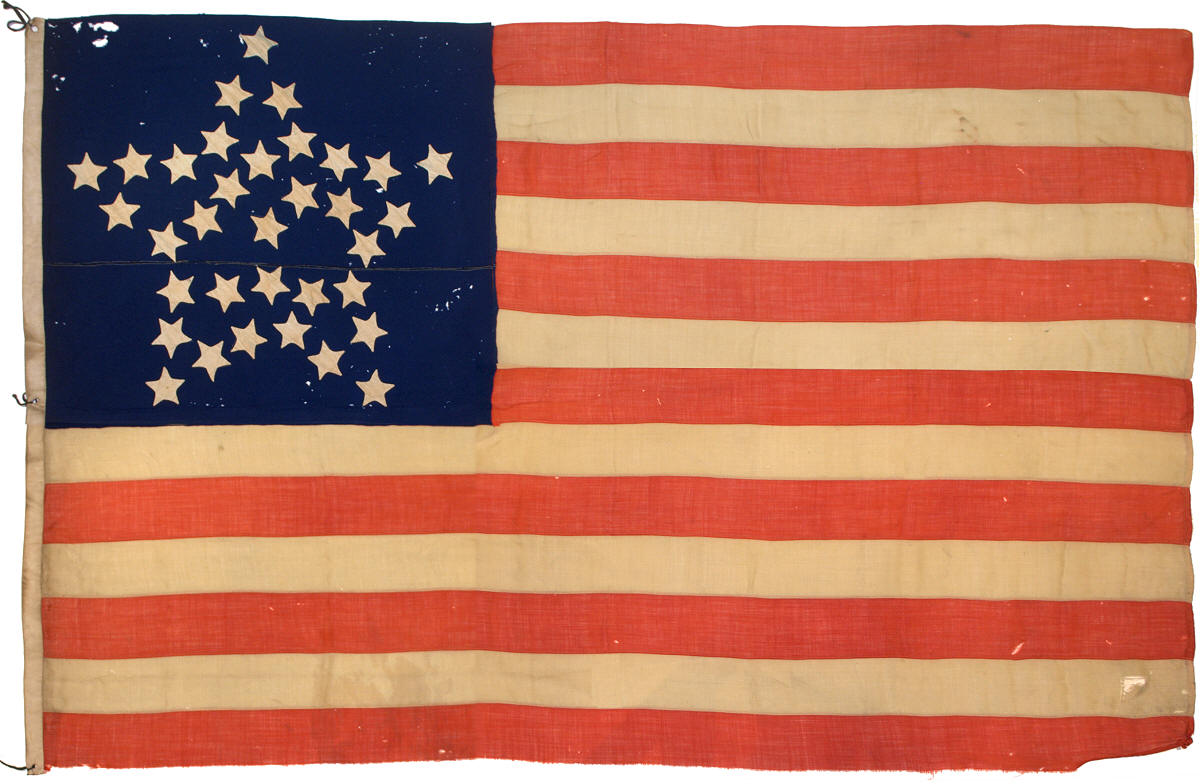
One of the most coveted
of all designs in American flag collecting is the Great
Star pattern, also known as the Grand Luminary pattern.
The pattern was proposed by Captain Samuel Reid, circa
1815-1820, as a way to arrange the stars so the pattern
would be easier to identify at sea, and so that the same
basic design could be maintained as the number of stars
grew. Reid's proposal was rejected by President
Monroe, but regardless of the pattern not being
officially adopted, the practice of making flags with
stars arranged in this fashion is seen on some flags
beginning in the 1820's. A small peak in the production
of Great Star flags took place with the 26 star count
for Michigan statehood, circa 1837-1845 (see
IAS-00168) and the pattern also became very popular during the
American Civil War, after which it all but
disappeared from use. The Civil War era Great Stars
are among the most sought after types of early American flags, and this
beautiful flag, entirely original and unaltered, and
dating to the opening two years of the Civil War, is a
gem among known examples. Like another Great Star in
the Rare Flags collection,
IAS-00091, this Great Star is oriented so that it
stands straight and proud on the canton when the flag is
displayed horizontally. The stars of the flag,
made of cotton, are double-appliqué, being hand sewn,
back-to-back, onto both sides of the canton. The
wool of the canton is made of a heavy twill wool weave,
the same type that would have been used for blankets or
uniforms. The wool stripes of the flag are machine
stitched and the grommets on the cotton hoist of the
flag are whip stitched by hand.
It remains in a remarkable state of preservation, with
rich, deep colors and very little mothing or
wear. Overall it is a rare, unique
example of the type and a wonderful and important early Civil War
period flag.
|

